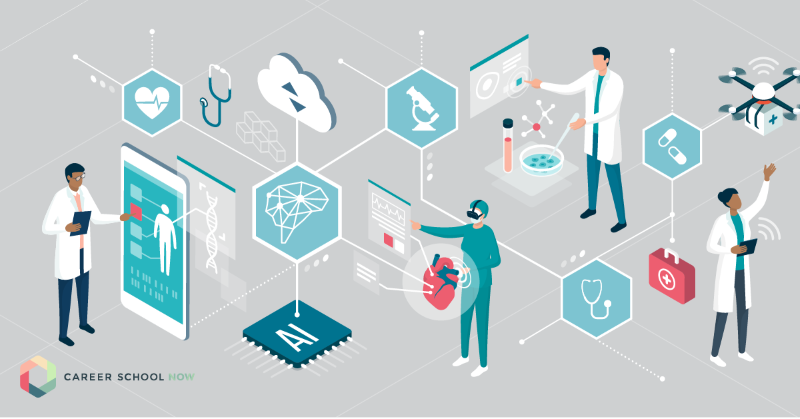The Future of Medical Administration: Patterns and Technologies to Watch
The Future of Medical Administration: Patterns and Technologies to Watch
Blog Article
Ideal Practices in Medical Management for Improving Performance and Minimizing Expenses
In the ever-evolving landscape of health care, the quest of best methods in clinical administration is critical for enhancing effectiveness and suppressing expenditures. By incorporating sophisticated modern technologies such as digital wellness documents and telemedicine, health care service providers can improve procedures and boost patient treatment. However, innovation alone is not a remedy; optimizing resource appropriation and cultivating joint interaction among care teams are just as important (medical administration). As companies make every effort to balance quality and price, what methods should be focused on to accomplish these twin goals? The solution to these questions hold the secret to an extra lasting health care system.
Leveraging Advanced Technology
The assimilation of electronic services into medical care systems has actually transformed the way facilities operate, simplifying procedures and improving client treatment. By streamlining client information, EHRs remove the requirement for cumbersome documentation and assist in smooth interaction among healthcare providers.
Telemedicine is an additional technological advancement that has actually transformed person communication. It offers ease for both individuals and healthcare specialists by allowing remote consultations, which can decrease the demand for in-person sees and optimize consultation scheduling. In addition, telehealth platforms can prolong healthcare access to country or underserved areas, connecting voids in care distribution.
Additionally, making use of Artificial Knowledge (AI) and equipment discovering is coming to be increasingly common in predictive analytics, enabling very early discovery of prospective wellness issues and more enlightened decision-making. These technologies, when integrated successfully, can enhance diagnostic precision and customize person therapy plans, inevitably resulting in boosted healthcare results and functional effectiveness.
Optimizing Source Appropriation
Effective source allowance is essential for making best use of the effectiveness of clinical management. By tactically taking care of sources such as personnel, equipment, and finances, health care facilities can substantially boost their functional efficiency, boost patient outcomes, and reduce unnecessary expenditures. The initial step in optimizing resource allotment involves conducting an extensive assessment of current assets and recognizing areas where resources may be underutilized or overextended. This assessment ought to be data-driven, utilizing metrics and analytics to educate decision-making processes.
Focusing on source allotment based upon individual needs and solution demands is important. This entails aligning sources with high-demand areas, such as emergency situation care or specialized treatments, to make certain timely and efficient individual treatment. Applying versatile staffing versions can likewise maximize labor resources by readjusting workers appropriation in action to varying person volumes. In addition, embracing telemedicine and various other technological options can ease physical resource restrictions by offering alternate methods for patient-provider interactions.
Funds should be meticulously checked and assigned with calculated foresight to sustain both temporary functional demands and long-term institutional goals. This includes investing in training programs that improve personnel proficiencies and taking on energy-efficient techniques that reduce operational costs (medical administration). Eventually, an enhanced source appropriation approach fosters a sustainable healthcare environment that is responsive, efficient, and economically prudent
Streamlining Process Processes
When health care centers purpose to boost functional performance, simplifying process procedures ends up being an essential emphasis. Effective process reduce redundancy, eliminate unnecessary steps, and improve sychronisation among healthcare professionals. This strategy not just speeds up service distribution yet additionally improves the high quality of client care.

Next, modern technology combination plays a considerable duty in improving operations. Implementing electronic wellness records (EHRs) and digital doctor order entry (CPOE) systems lowers documents, decreases human error, and makes certain information comes to all relevant workers. Furthermore, leveraging telemedicine systems can streamline patient appointments and follow-ups, decreasing the pressure on physical infrastructure.

Ultimately, structured operations bring about set you back decreases and enhanced patient complete satisfaction, promoting a much more sustainable healthcare setting.
Enhancing Information Administration
Building upon streamlined process, enhancing data management comes to be an essential part ahead of time health care administration. Reliable data management systems are important for preserving accurate person documents, enhancing decision-making, and guaranteeing compliance with governing standards. By executing robust information monitoring services, healthcare centers can improve the quality of person treatment while at the same time reducing functional costs.
One trick element of enhancing information management is the integration of innovative electronic health document (EHR) systems. These systems facilitate the smooth exchange of patient details across various departments, lowering duplication of examinations and reducing mistakes. A well-designed EHR system sustains data analytics, allowing doctor to identify fads and make informed choices regarding patient care.
Additionally, protecting person data is extremely important. Adopting detailed cybersecurity measures, including file encryption and normal audits, guarantees find more the integrity and confidentiality of sensitive info. This not just protects clients yet also maintains the establishment's online reputation.
Buying personnel training is one more essential factor. Informing health care specialists on information monitoring methods boosts their capacity to effectively anchor utilize technology, resulting in improved person end results. To conclude, improving information monitoring via innovative modern technology and thorough training is essential for achieving efficiency and cost reduction in medical administration.
Fostering Collaborative Communication
An important part beforehand clinical administration is promoting collaborative communication among healthcare professionals. Effective interaction is extremely important for making certain smooth individual treatment, enhancing treatment results, and minimizing errors. By encouraging open dialogue and coordination across multidisciplinary teams, healthcare companies can enhance their operational performance and minimize unnecessary costs.
Central to this strategy is the combination of communication modern technologies such as digital health and wellness records (EHRs) and secure messaging systems, which help with the rapid exchange of critical individual info. These devices allow doctor to access and share information in real time, ensuring that all staff member are educated and lined up in their decision-making processes. Regular group conferences and interdisciplinary rounds can further promote a society of partnership and liability.
Training programs focused on improving interaction abilities are additionally important. Eventually, promoting joint interaction leads to improved healthcare delivery and cost savings.

Conclusion
Incorporating sophisticated modern technology, such as digital helpful hints wellness documents and telemedicine, along with maximized source allowance and structured process processes, is important for boosting performance in clinical management. Efficient data management and fostering joint interaction amongst health care teams are essential for reducing redundancies and improving treatment top quality. By prioritizing precautionary care and participating in top quality enhancement initiatives, medical care companies can accomplish considerable cost financial savings and boosted client outcomes, thereby ensuring sustainable medical care distribution in a significantly complicated environment.
Report this page